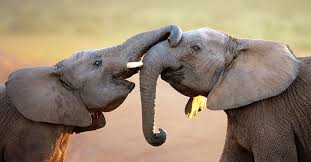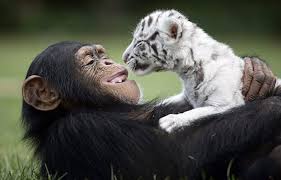For centuries, humans have debated the inner lives of animals. Do our pets feel love? Can elephants grieve? Do chimpanzees experience joy, sorrow, or jealousy? These questions are no longer confined to philosophy. Today, science is diving deep into the emotional worlds of animals, yielding fascinating—and often heartwarming—insights.
While it’s clear that animals react to their environment, the question of whether they possess emotions comparable to human feelings is more complex. Emotion is deeply tied to consciousness, self-awareness, and cognitive ability. As we explore what science has discovered, we’ll find that many animals do, in fact, experience emotions—though the nature and depth of those feelings may differ from our own.

Understanding Emotions: What Are We Really Asking?
Before we can determine whether animals have emotions, we must define what we mean by “emotion.” In humans, emotions are subjective experiences that include physiological changes (like increased heart rate or hormonal shifts), behavioral responses (like crying or laughing), and cognitive assessments (like interpreting a situation as happy or sad).
When scientists study animal emotions, they often rely on behavioral and physiological indicators. Because animals can’t verbalize their feelings, researchers look for signs like body posture, vocalizations, hormone levels, and brain activity. These indicators can suggest emotional states ranging from fear and anger to affection and contentment.
Historical Skepticism: The Cartesian View
Historically, the scientific community was reluctant to attribute emotions to animals. René Descartes, the 17th-century philosopher, famously proposed that animals were automata—biological machines without consciousness or feelings. For centuries, this view dominated Western science.
It wasn’t until the 20th century that this perspective began to shift. The rise of ethology, the scientific study of animal behavior, ushered in a new era. Pioneers like Konrad Lorenz and Jane Goodall observed complex behaviors in animals that strongly suggested emotional depth. Goodall, for instance, documented chimpanzees grieving for dead family members and engaging in social bonding rituals.
Mammals and Emotions: The Case of Dogs, Elephants, and Primates
Among animals, mammals—especially social species—exhibit some of the clearest signs of emotional lives.
Dogs: Man’s Emotional Mirror
Dogs have co-evolved with humans for tens of thousands of years, and their emotional intelligence is remarkable. Studies have shown that dogs can read human facial expressions and tone of voice. They experience attachment, fear, jealousy, and even empathy. One study found that dogs would whine or try to comfort their owners when they pretended to cry, suggesting a capacity for emotional attunement.
Neurologically, dogs have similar brain structures involved in emotion as humans, including the amygdala and limbic system. They also produce oxytocin—the same “bonding hormone” found in humans—during positive social interactions, such as being petted or playing with their owners.
Elephants: Empathetic Giants
Elephants are often cited as one of the most emotionally intelligent animals. They display behaviors such as mourning their dead, forming lifelong social bonds, and helping injured herd members. In the wild, elephants have been observed standing vigil over the bones of deceased companions, gently touching the skulls and tusks with their trunks.
Researchers have recorded cases of elephants rescuing other species, including humans, from danger. Such acts suggest an empathetic response that may go beyond instinctive behavior. Neuroscientific studies reveal that elephants possess a highly developed neocortex, especially in regions linked to social cognition.
Primates: Emotional Complexity in Our Closest Relatives
As our closest genetic relatives, chimpanzees and other great apes show a wide range of emotional behaviors. They smile when happy, scream in fear, and exhibit complex social strategies that require emotional awareness, such as forming alliances or reconciling after conflicts.
Frans de Waal, a renowned primatologist, has documented instances of reconciliation in chimpanzee groups, where two individuals who fought earlier would later embrace or kiss. Such behaviors imply not only emotional experiences but also a degree of emotional intelligence and social understanding.

Birds, Fish, and Beyond: Expanding the Emotional Circle
While mammals tend to steal the spotlight in emotional research, evidence is mounting that birds and even fish may have emotional lives.
Birds: Avian Intelligence and Feeling
Parrots, crows, and ravens—some of the most intelligent birds—exhibit behaviors that suggest emotional depth. Parrots can form strong bonds with humans, showing signs of distress when left alone for too long. Crows have been observed participating in what appears to be mourning rituals, gathering around deceased companions.
Birds have brains structurally different from mammals, yet functionally analogous regions appear to manage emotion and cognition. For instance, the avian version of the amygdala shows activity changes corresponding to stress or pleasure.
Fish: Feeling Below the Surface?
It may surprise some to learn that fish can also show emotional responses. While lacking facial expressions, fish exhibit physiological stress reactions, avoid painful stimuli, and display social behaviors like cooperation and competition. Some species, like cleaner fish, engage in mutual grooming behaviors with other fish and react to social rejection.
Though their brains are simpler, the emotional responses in fish suggest that basic emotional experiences—like fear or pleasure—may be more widespread in the animal kingdom than once believed.
The Role of Neuroscience: Emotional Architecture Across Species
Comparative neuroscience has provided compelling evidence for shared emotional structures across species. Many animals possess an amygdala, hippocampus, and hypothalamus—brain areas crucial for emotional processing in humans. Hormones like oxytocin, dopamine, and cortisol also play similar roles in regulating mood and social behavior in animals.
Functional MRI studies have revealed brain activity patterns in dogs and monkeys that mirror human responses to emotional stimuli. These findings suggest a continuity of emotional processing mechanisms that likely evolved over millions of years.
Emotions vs. Emotional Awareness: A Crucial Distinction
It’s important to differentiate between emotions and emotional awareness. An animal may feel fear or joy, but that doesn’t necessarily mean it reflects on those emotions as a human might. Humans possess meta-emotions—the ability to feel emotions about emotions (e.g., feeling guilty about being angry). This level of self-awareness is likely rare in the animal kingdom.
That said, the absence of reflective thought doesn’t negate emotional experience. A dog might not understand the concept of “sadness” in the abstract, but its behavior when left alone or when its owner returns strongly suggests it feels something akin to it.
The Ethical Implications: Rethinking Our Relationship with Animals
If animals experience emotions, this has profound ethical implications. Recognizing the emotional lives of animals challenges how we treat them in captivity, agriculture, research, and entertainment. Practices once justified by assumptions of animal insentience are increasingly under scrutiny.
Animal welfare laws in many countries are now informed by emotional and cognitive research. For example, the European Union has acknowledged certain animals as sentient beings, and some countries have banned the use of great apes in laboratory research due to their emotional complexity.

A Spectrum, Not a Mirror
So, do animals have emotions like humans? The answer is nuanced.
Animals clearly experience a range of emotions, from basic feelings like fear and pleasure to more complex social emotions like empathy and grief. However, the emotional lives of animals exist on a spectrum, not as a mirror of human experience. Some species share striking similarities with us, while others may experience emotions in ways that are fundamentally different or more limited in scope.
What’s increasingly clear is that emotion is not a uniquely human trait. It’s a biological feature shared, in varying degrees, across the animal kingdom. Recognizing this not only deepens our understanding of animals—it reshapes our understanding of what it means to be human.
Read more:https://nfds.xyz/wp-admin/post.php?post=81&action=edit



